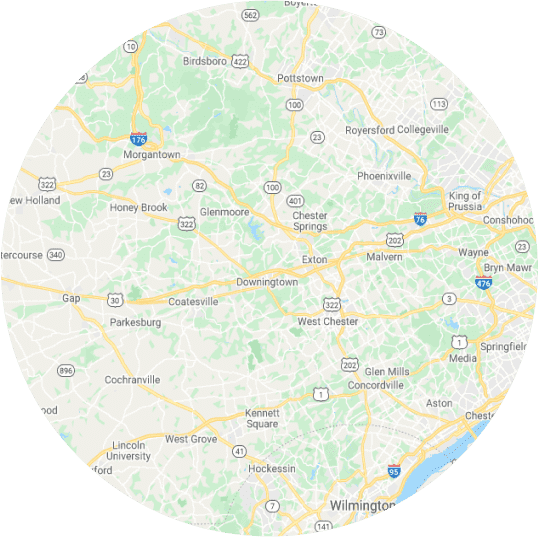How To Fix a Running Toilet
Not only is it an irritating inconvenience when your toilet will not stop running, but it can also waste hundreds of gallons of water per day. To stop your running toilet from running up your water bill, continue reading for repair tips from the knowledgeable experts at Mattioni.
How Your Toilet Works
The key to fixing your running toilet is knowing how to identify the cause; this begins with a basic understanding the operating process of your toilet. Read on for a brief overview of how your toilet works.
1. Parts of Your Toilet
Your toilet has two main parts — the bowl, which holds water and connects to the drain for water and waste disposal, and the tank, which is located behind the bowl and contains the devices for flushing along a water reserve for refilling the bowl.
2. Flushing Process
When you flush your toilet, water from the tank rushes into the bowl through the flush valve. This valve is plugged with a rubber stopper called a tank ball or flapper ball that’s connected to the valve with a small chain. The flapper is lifted off the valve when you pull the lever to flush.
Identifying the Cause of Your Running Toilet
Now that you have familiarized yourself with the parts of your toilet and how they function, you can identify the cause of your running toilet. If your toilet is running nonstop, you’ll need to check for leaks, check the toilet chain, check the toilet flapper, and check your tank’s water level. These are the most common causes of a running toilet issue. Read on to learn how to check for these issues and how to fix the problem.
1. Check for Leaks
Sometimes the tank can leak water into your toilet bowl, resulting in a running toilet. To check for this:
- Add a few drops of food coloring to your toilet tank water and let it run for a few hours.
- Then, check to see if your toilet bowl water has changed to that color. If so, you have a leak in your toilet tank and should have a professional come and take a look.
2. Check the Toilet Chain
One of the most common causes of a running toilet is when the chain that that connects the flush valve to the flapper ball becomes unhooked, becomes tangled, or is the wrong length. To identify and fix a chain problem:
- Remove the lid to your water tank and flush your toilet, observing the chain.
- If your chain is unhooked, remove the flapper ball from the tank by pulling on the wings that attach to the overflow tube (located in the center of your tank). Remove the chain from the flapper with pliers, then use those pliers to unbend and hook the last link to the flapper. Do the same with the other end of the hook to reattach it to the flushing handle.
- If your chain is too long, unhook the pin of the chain from the flusher handle and make the chain a shorter length by putting the pin down a few links (toward the flapper ball).
- If your chain is too short, examine your chain for kinks causing it to become wrapped around the metal arm. Smooth kinks out, and flush to see if the chain allows the flapper ball to seal. If the chain is still too short, you will need to replace it with a new one.
If you’d like a professional plumber to handle your toilet running issue in PA, contact Mattioni!
3. Check the Toilet Flapper
The problem causing your running toilet may be the toilet’s flapper ball. Over time, the flapper can become worn down or the rubber plug inside the tank can lose its seal. To diagnose and fix this problem:
- Remove the flapper by unhooking the sides from the pins at the bottom of the overflow tube (the open PVC pipe located in the middle of the tank).
- Examine the flapper for any warping, mineral deposits, discoloration or other signs of damage. (The bottom of the flapper should be smooth.)
- If your flapper is damaged, pull it off and take it to your local hardware store to ensure you purchase the right replacement. Replace the flapper by fitting it into place and attaching the hooks on the side to the pins on the overflow tube.
*Pro Tip: If you are unable to find your precise flapper at the store, pick the closest looking match of a “universal” replacement flapper, unless your toilet originally had an adjustable flapper installed. To avoid a headache, call a professional to handle the replacement process.
4. Check Your Tank’s Water Level
If the flapper or toilet chain are not your problem, another common cause is the water level in your tank. Look in your tank to see if water is going into the overflow tube (look for an open tube in the middle of the tank). If water is going into the overflow tube, here’s how to fix it:
- Examine your float ball. The float ball height tells the fill valve to shut off when the tank is full; shake the ball to see if there is any water in it, and if there is, you will need to replace it.
- If your float ball does not have any water in it, locate the screw on top of the fill valve that attaches to the float ball arm, and use a screw driver or pliers to turn that screw counterclockwise to lower the water level, and clockwise to raise the water level.
- Then, flush the toilet to see if the water tank refills to the proper fill line.
If you have taken all these steps and still have not identified or fixed the cause of your running toilet problem, then it is time to seek the help of a plumbing professional. For the most thorough and comprehensive services in fixing any of your plumbing problems, contact Mattioni and allow our experts help you with the repairs you need!





